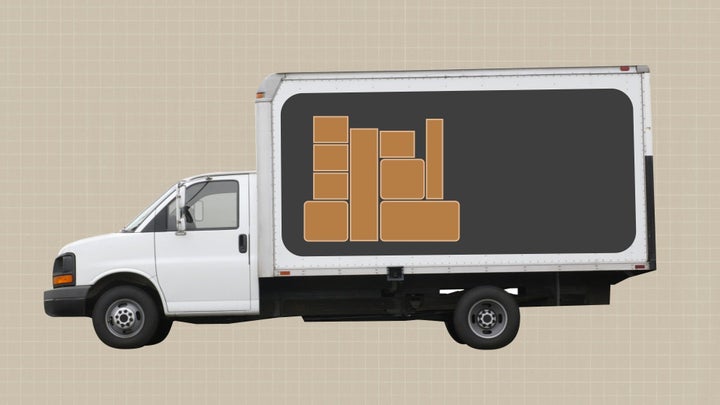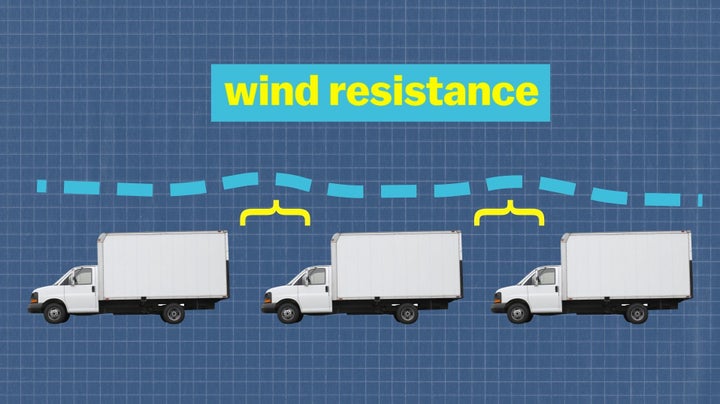We’ve all been there. Running low on batteries, diapers, socks ― whatever ― go online, order and click the free two-day delivery option. Because, why not? It’s free and it’s fast.
What people may not realize is that the speedy delivery comes at an environmental cost.
A new video released by the University of California and Vox as part of their Climate Lab series aims to draw attention to the unintended impacts of our need for instant gratification by highlighting the staggering scale of the digital shopping revolution.
Since 2009, U.S. Postal Service deliveries have increased by 65 percent, according to UC Davis. As the holiday shopping season approaches, it’s estimated that online sales for November and December alone will hit $107.4 billion.
E-commerce has made people’s lives easier. Nearly 80 percent of Americans shop online, and they can do so any time, anywhere. One in five people even do it while using the bathroom.
It can also be greener than going to physical stores, since people don’t need to jump in their cars to get to there. A Massachusetts Institute of Technology study found that a traditional store-visiting shopper had a carbon footprint almost two times that of an online shopper.
However, there’s an important caveat. This environmental advantage of online shopping disappears if the shopper selects speedy delivery.
“These rush deliveries are the ones breaking those benefits because now there is no time to consolidate, so there will be more trips for less cargo,” said Miguel Jaller, an assistant professor at UC Davis.
In extreme cases, items may have to be flown in from another state or from another country. But the bigger issue is that companies have less time to organize the most efficient transport, which means trucks are sent out half full, increasing the number of trips and vehicles on the road.
Carbon emissions per customer and per product shoot up as a result. Why this matters? These emissions trap heat, contributing to climate change.

A multi-year study by the University of Delaware, focusing on Newark, Delaware, found that online shopping burdened the transportation system in terms of speed, travel times and emissions. Delivery trucks added to air pollution and wear and tear on the roads, the report noted.
“Generally speaking, slower ground shipping is the greener choice over air shipping,” Mingxin Li, co-author of the study and a scientist at the Delaware Center for Transportation, said. “The prevalence of expensive, inefficient, and environmentally unsustainable quick, free delivery options, air freight or partial-load deliveries are becoming increasingly common.”
What are the solutions? Smart traffic lights are one idea in UC’s video. These are being tested in cities, including Los Angeles. The city’s system uses sensors, cameras and computers to adjust signals responsively to keep traffic moving smoothly. This can make journeys faster and reduce idling, which cuts down emissions.
While such systems are helpful, traffic may only be a marginal influence on pollution in some cities, said Josué Velázquez, director of the MIT Sustainable Logistics Department. “There are many other factors that affect the transportation emissions during delivery,” he said, such as the hilliness of the route.
Then there is “platooning.” Wirelessly connected trucks communicate with each other, maintaining a constant speed in a close line at highway speeds. Supporters say this can reduce congestion, lowering emissions and improving air quality. A recent paper from research company TNO says platooning could reduce fuel use by around 10 percent.

But reducing the impact of shipping is also about changing shoppers’ behavior and some of the impulses of consumerism, said Jaller. “We need to control ourselves. I think there’s also a lot of impulsive buying and induced demand.”
Free speedy shipping for all these goods may seem a no-brainer, but “we need to know that it’s not free for the system and for the environment,” Jaller said. “So we are not paying that externality.”
Jaller said changing consumer behavior is the way to solve the problem, whether that’s through incentives, taxes, or simply transparency about the actual cost of online products and services.
One idea gaining ground is a “green button” on shopping websites, which allows customers to make the eco-friendly choice of waiting a little longer for their delivery to ensure it is shipped in the most energy-efficient way.
Green buttons are something Velázquez has been testing at MIT. Providing an option that says “same-day delivery is equivalent to killing 3,000 trees” compared with one that says “if you wait three to four days, then it’s equivalent to killing 10 trees, and by the way we are going to plant 15,″ can really drive behavior, he said.
Of course, delivery is just part of the impact of the goods we consume, which a study in the Journal of Industrial Ecology estimates contributes to more than 60 percent of global greenhouse gas emissions. But it might be a good place to start.
For more content and to be part of the “This New World” community, join our Facebook Group.
HuffPost’s “This New World” series is funded by Partners for a New Economy and the Kendeda Fund. All content is editorially independent, with no influence or input from the foundations. If you’d like to contribute a post to the editorial series, send an email to thisnewworld@huffpost.com
